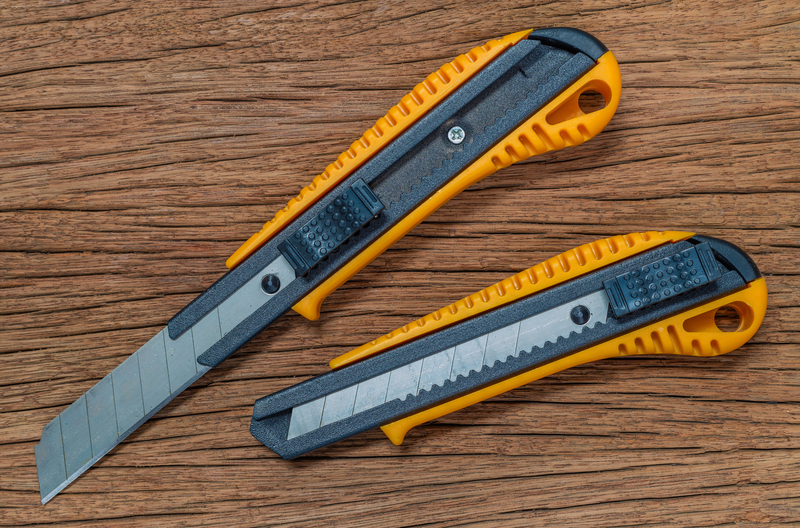Why Piano Moving Should Never Be a DIY Project
Moving a piano might seem straightforward at first glance, but it is a complex and risky task best left to professionals. Whether you own a grand piano, an upright, or a digital keyboard, relocating it safely requires specialized knowledge, equipment, and manpower. In this comprehensive guide, we'll discuss the key reasons why piano moving should never be a DIY project, and what risks you can avoid by hiring expert piano movers. If you're considering handling your piano move independently, read on before you embark on this challenging journey!

Understanding the Complexity of Piano Moving
More Than Just Heavy Lifting
Pianos are not only heavy--often weighing between 300 and 1,200 pounds--but they are also extremely delicate and complex musical instruments. A single upright piano contains more than 10,000 moving parts, many of which are sensitive to shock, vibration, and moisture. The average baby grand is even more intricate. Attempting to move a piano by yourself without proper training can easily result in costly damage to your instrument, your property, or even to yourself.
The Structure and Fragility of Pianos
- Weight Distribution: The weight of a piano is unevenly distributed, making it unwieldy and prone to tipping or shifting during transport.
- Delicate Internal Mechanisms: The hammers, strings, and keys are easily knocked out of alignment or broken if the piano is handled roughly.
- Expensive Exterior Surfaces: Many pianos are finished with glossy or antique woods that scratch or chip easily, reducing both their value and aesthetic appeal.
The Dangers of DIY Piano Moving
Risks to Personal Safety
Attempting a DIY piano move poses serious risks to your health and safety. Even with several helpers, the size and awkward weight of a piano can easily lead to:
- Back Injuries: Incorrect lifting techniques can cause herniated discs, muscle strains, and chronic back pain.
- Crushed Fingers and Toes: One slip or shift in balance can result in crushed limbs or broken bones.
- Falls and Slips: Carrying heavy loads up or down stairs greatly increases the risk of dangerous falls.
Professional piano movers are trained in safe lifting techniques and use specialized equipment designed to minimize these risks--something that simply cannot be replicated with household tools and inexperienced helpers.
Potential Damage to Your Piano
A minor bump, drop, or slip can have devastating consequences for your piano. The following are just a few common incidents that occur during amateur attempts at moving a piano:
- Broken legs and pedals
- Cracked soundboards
- Misaligned or broken keys
- Scratched or gouged wood finishes
- Loosened or damaged internal components
The cost of repairing or restoring a damaged piano after a failed DIY move can easily surpass the cost of hiring professional movers in the first place.
Damage to Property and Surroundings
- Gouged floors and walls: Pianos can easily slip off dollies or be dropped, damaging wood floors, tile, carpeting, walls, and even door frames.
- Broken stairs and railings: The immense weight can put stress on staircases, causing structural damage.
- Scratched paint and broken fixtures: Tight corners and narrow doorways become hazards for both the piano and your home.
Why Professional Piano Moving Services Are Essential
Specialized Equipment
Professional piano moving companies use industry-specific tools and protective gear designed for safe and efficient transport. Common equipment includes:
- Piano dollies with locking wheels for stability
- Heavy-duty straps for secure lifting and carrying
- Padding and blankets to protect sensitive finishes
- Ramps and skid boards for smooth navigation over stairs
- Custom crates for long-distance or international moves
Expert Handling and Techniques
Trained piano movers know exactly how to disassemble, wrap, and maneuver your instrument through any environment. They understand the unique challenges presented by stairs, elevators, and narrow passageways, and have developed strategies for overcoming these obstacles without damaging the piano or property.
Insurance and Liability Coverage
When you hire professional piano movers, your instrument is typically covered under insurance. This means that if any mistakes do occur, your piano can be repaired or replaced at no extra charge to you. DIY moves offer no such protection, and homeowners' insurance rarely covers damages caused by improper moving techniques.
Common Myths About Moving a Piano Yourself
Myth #1: "I Can Just Get Some Friends to Help"
While it's tempting to enlist a few strong friends, this approach overlooks the need for training and the right equipment. Untrained helpers only increase the risk of injury or damage. Plus, friendships can be strained if something goes wrong!
Myth #2: "I Can Rent a Dolly and Move It Like Any Other Furniture"
Standard furniture dollies are not designed for pianos. Moving a refrigerator or sofa is fundamentally different from moving a 500-pound instrument with intricate moving parts. Without proper piano skids and harnesses, disaster is likely.
Myth #3: "It's Cheaper to Do It Myself"
While a DIY move might appear to save money up-front, you take on significant financial risks in terms of potential repairs, property damage, and medical bills. In the long run, hiring piano moving experts is far more cost-effective.
How Professional Piano Movers Operate
Comprehensive Assessment
Before moving day, a professional piano mover will evaluate:
- Instrument size and type
- Access points and pathways
- Environmental hazards (stairs, tight corners, weather)
- Protective measures needed
Step-by-Step Process
- Pre-move inspection and preparation
- Disassembly of detachable components (legs, pedals, lyre, etc.)
- Careful wrapping and padding
- Controlled and methodical lifting with the right number of personnel
- Transport using truck equipped with climate control and stabilizing hardware
- Unloading, reassembly, and final tuning as needed
Post-Move Support
Experienced piano movers also offer after-move services such as tuning, adjustments, and cleaning; ensuring your instrument is restored to peak condition after relocation.
Scenarios Where a Professional Piano Mover Is Essential
- Stairs or multi-level homes: Navigating staircases is the most dangerous aspect of piano moving and requires expert handling.
- Narrow hallways or door frames: Turning and angling a large piano through tight spaces takes precision and skill.
- Long-distance moves: Moving across cities or states demands climate-controlled vehicles and secure packing to prevent damage from temperature or humidity changes.
- Historic or vintage pianos: Older instruments require delicate handling to avoid structural damage or loss in value.
Long-Term Impact of Improper Piano Moving
- Permanent misalignment of internal components leading to poor sound quality
- Loss of tuning stability, requiring costly service calls
- Cracked soundboards or separated glue joints, which are often irreparable
- Decreased resale value
Even if your piano seems to survive a DIY move unscathed on the outside, subtle internal damage could result in costly repairs and diminished performance for years to come.
Tips for Choosing a Professional Piano Mover
- Look for specialization: Not all movers are experienced in piano moving--ask for references and proof of expertise.
- Check for insurance: Ensure they offer comprehensive coverage for both the piano and your property.
- Request a written estimate: A reputable piano mover will inspect both locations and provide a detailed written quote before starting.
- Read reviews and testimonials: Online feedback helps you gauge reliability and customer satisfaction.
- Ask about post-move service: Moving can affect a piano's tuning and action--choose a company offering follow-up care.

Frequently Asked Questions: Moving a Piano
Can I Move a Piano on My Own If It's Just Across the Room?
Even a short distance move requires caution. Sudden shifts, floor transitions, or improper lifting can cause injury or harm the piano. Always use proper equipment and get help--even for small moves.
How Much Does Professional Piano Moving Cost?
Costs vary depending on distance, difficulty, instrument size, and required services. On average, local moves range from $200 to $600, while long-distance moves can cost $1,000 or more. This investment protects your valuable piano from thousands of dollars in potential damage.
How Should I Prepare for Professional Piano Movers?
- Clear all pathways and entrances before moving day.
- Remove rugs, obstacles, and furniture from the path.
- Secure pets and alert the movers to any potential hazards.
Do I Need to Retune My Piano After Moving?
Yes--changes in environment, vibration, and humidity can affect tuning. It's best to wait a few weeks for the piano to acclimate to its new setting, then schedule a professional tuning.
Conclusion: Leave Piano Moving to the Experts
Why piano moving should never be a DIY project is clear after considering the risks to your instrument, property, and personal safety. Pianos are not only valuable and heavy, but also delicate and expensive to repair. The professional knowledge, specialized equipment, and insurance that expert piano movers provide simply cannot be matched with a do-it-yourself approach.
If you're relocating your piano--whether it's across the room or across the country--invest in specialized piano moving services. Your piano, your home, and your health will thank you for years to come.
Ready to Protect Your Instrument?
If you're searching for trustworthy and experienced piano movers, take the time to research and select a reputable company in your area. By prioritizing expertise and safety, you ensure your beloved piano continues to bring joy and music to your home for generations.